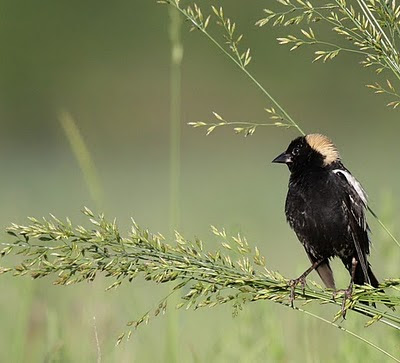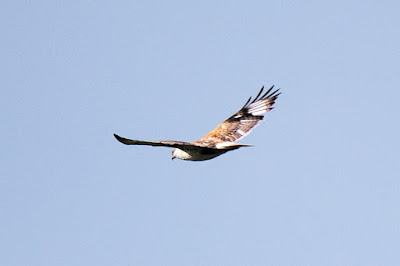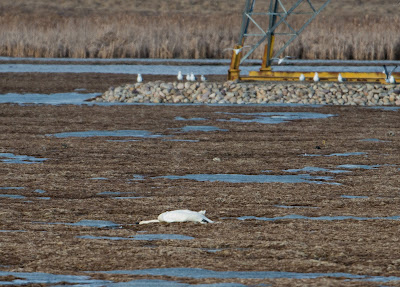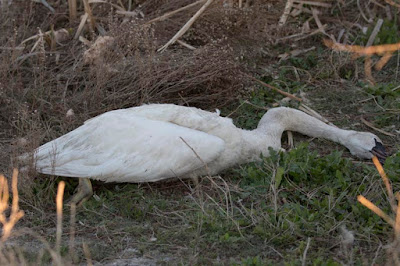 |
| the view from inside a luxury RV |
It has been a while since I have had some strongly worded
responses to things I have written in this space, but the last post about a
privately-owned RV park in Sask Landing Provincial Park got almost as many
comments as the
Wawota quad rally post
last year.
If you want to raise an environmental issue that will elicit
some discussion, it seems all you have to do is give your opinion on the ways
Saskatchewan people use public land for recreation.
Before I say any more about that kind of use and the
privatization agenda that goes with it hand in glove, I have to provide a
correction with some new information I have received about that privately owned
and managed campground for long-term RV leasing at Sask Landing Park.
In my last post I wrote that some of the campers there were “building
decks and extending their site footprint well into the drip-line zone [beneath
the cottonwoods]. Within a matter of weeks, the cottonwood grove has gone from
a quiet natural area where any member of the public could walk and experience
some prairie beauty, to the private tiki-lit domain of a few privileged and
high-impact lease-holders.”
Well, it turns out that that is not entirely fair,
and overstates things. The campground owner said in his comments that “We have
about 10% of our lots with cotton [sic] poplars on them. All potential lessee [sic]
had a list of those lots and were well informed no building can happen on the
drip zone. I assure you that non [sic] has!”
I have received another report, however, assuring me that there are some firepits under the cottonwoods.
A third report said that there were pathways and paving stones being placed
under the dripline and people are cutting the grass. Nevertheless, it sounds
like disturbance under the cottonwoods is not a serious problem at least in this
first summer of the campground bringing in 125 long term lease RVs.
Therefore, I owe the campground owner, Mr. Bardahl, an
apology for jumping to conclusions. I will be more careful.
However, the details of what is or is not happening under
one grove of trees is not the main issue here. As Mr. Bardahl points out in his
remarks, it is the privatization of our provincial park land that is troubling me.
Why? If you have been going to Saskatchewan Parks as long as
I have you will know the problem and its history. A comment I received from a
reader who has witnessed a degradation of our parks under privatization and
weak regulation sums things up:
“This article really strikes home. My family built a small
cabin in Duck Mountain Provincial Park in its early years where there were more
stringent limits on development. Green space was much more protected. Cabins
were cabins, not four-season mansions. It was accessible and appreciated by
people of all income levels. While I grew up, I saw the lake become filled with
noise in the summer, the lake got turbid, and the shoreline became dominated by
atrocious monuments to wealth. I've seen my neighbours turn from friendly lake
people to cold-shoulder suburbanites who use their vacation home for all of
three weeks per year. In that time, the quality of park services to the public
fell drastically. There used to be several trails - now all grown in and
impassible. No organised events or activities for all ages, aside from the
usual interpretive programming. The business that runs the general store,
cabin/boat rentals and campground store is a joke (but that's another story.)
The park favours the rich, through and through. It has lost its mandate to the
public.”
The degradation described here began with the neo-liberalism of the early ‘80s.
The new Grant Devine Conservative government, following its ideology of
reducing government and turning public assets into private ones, started to sell
off rental accommodations in provincial parks—in particular, the new facilities
at Duck Mountain and Cypress Hills. The buildings began to decline almost
immediately under private ownership and the fees rose. Meanwhile funding for
ecological programming and maintenance of park infrastructure began to erode as
tax-cutting agendas took hold of voters and governments in the late 80s and
90s.
During the NDP era, none of this was remedied and now under
the Saskatchewan Party the agenda of saving taxes by cutting environmental
protection and providing corporate welfare for private developers has a firm
grip on our parks system. Private contractors are often engaged to cut
firewood, maintain trails and clean facilities—and the work, when it is done,
does not have the same kind of quality control and accountability that comes
with a fully funded park system. Compare the state of the trails in our parks
to those you see across the border in the United States or in some other parts
of Canada and you will know what I mean. Our park staff do the best they can
with inadequate budgets but we keep electing the government that promises lowest
taxes.
Unfortunately, the same people who want their taxes low also
want more RV campsites in our parks. The demand for fully-serviced camping
facilities with water, sewer and electrical hook-ups and for long term RV-sites
in our parks is on the rise. For
whatever reason, more and more people seem to need to experience nature with a
fifth-wheel trailer or motorhome close at hand.
 |
| Cypress Hills Provincial Park Campgrounds . . . how much is too much? |
Meanwhile, other campers are complaining about the lack of
quiet, natural camping for tents, and feel that RV users are taking over our
parks and getting more than their share of park budgets. These conflicting perspectives both need to be
heard, but we have to find ways to meet a wide range of recreation and camping
needs without harming the natural heritage of our provincial parks.
Unfortunately, instead of a clear focus on carrying capacity
and ecological limits, we seem to have a park system that has thrown open the doors
to private business—come one come all. All proposals will be considered—monster
home subdivisions, RV lease site campgrounds, golf courses. How about a strip
mall? Paint ball anyone?
All of these businesses could be set up on private land but
in the new Saskatchewan, developers are learning that costs are far lower if
you can set up on publicly-owned land, particularly if there is some water,
sewage, road and electrical infrastructure you can piggy-back upon.
I have nothing against RV camping but it is, like hunting or
fishing, a high-impact use of public land and likewise requires some limits and
strict regulation. We don’t increase the bag limits and numbers of hunters
allowed in any given zone of the province just because more people want to
hunt; we stick to limits based on what the ecology can bear. It has to be the
same with building campgrounds, golf courses, marinas and other kinds of
man-made disturbance in our parks.
Do we want to end up with provincial parks that look like
privately run tourist operations attached to suburban subdivisions? I would hope that most
Saskatchewan people want to keep our parks natural and ecologically healthy,
but if we keep privatizing and developing pieces of land to meet the growing demand
for of high-impact recreation, the beauty, wildness, and quiet that draws us
to our lakes and parks will slowly become layered over in gravel, asphalt,
concrete, and paving stones.















































